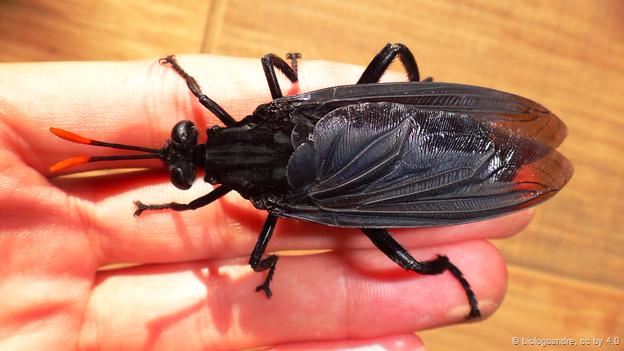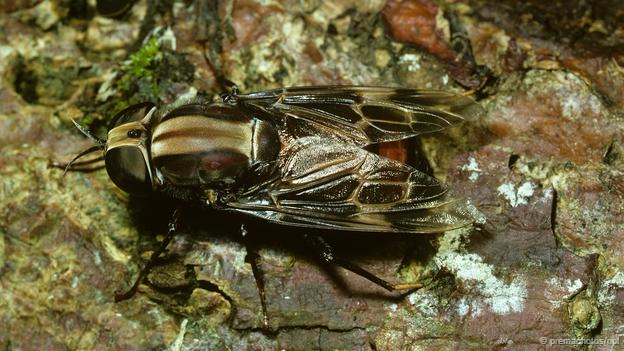Many people consider the common housefly to be a big pest, even more experience great distress when a cluster of flies hibernate in their home. But research has shown that there are two obscure species of tropical flies measuring at over three inches long, resulting in a contention for the title of the biggest fly in the world.
The size of a Mydas fly in comparison to a human hand.
Mydas Flies
Originally known as the Mydidae, there is said to be over 400 species of Mydas Flies all around the world, although they are mainly found in hot climates. Often referred to as the largest fly in the world, the largest species of this fly has been reported to grow to 7 centimetres long. The knowledge of Mydas flies’ lifestyles is very limited however, though adult males have been seen feeding from flowers, possibly to drink the nectar. Depending on the species, these flies vary significantly in their appearance yet still share the similarity of a wasp-like build and features. Despite their somewhat intimidating appearance, these flies do not bite or sting, and are said to be perfectly harmless.
Timber Flies
Timber Flies were originally named the Pantophthalmidae, and can be found in Central and South America. The name Timber Fly, derives from the fact that their larvae live in trees. The female timber flies will lay their eggs onto dying trees, resulting in the larvae drilling their way inside. It is said that because the wood from trees contains a low quantity of nutrition, these flies can take a long time to develop. Although when they do eventually emerge as adult flies, they are gigantic. “The largest ones we’ve got are around 8 centimetres head to abdomen,” says McAlister, who recently re-examined the Natural History Museum’s collection of timber flies. Adult timber flies are said to only live just a few weeks, as they do not seem to eat. Some species of timber flies have a wingspan measuring 8.5 centimetres, however they are not known to fly unless they are disturbed.
The Pantophthalmidae, commonly known as the Timber Fly.
Can these tropical flies be dangerous?
Even though both flies are considerably large, especially when compared to a common housefly, adult timber flies in particular are harmless. Despite their intimidating size, they do not have any powerful defences, and have been known to regularly mimic other insects. Mydas flies in particular have been known to impersonate wasps as they do not sting, but instead resemble them in order to defend themselves.






